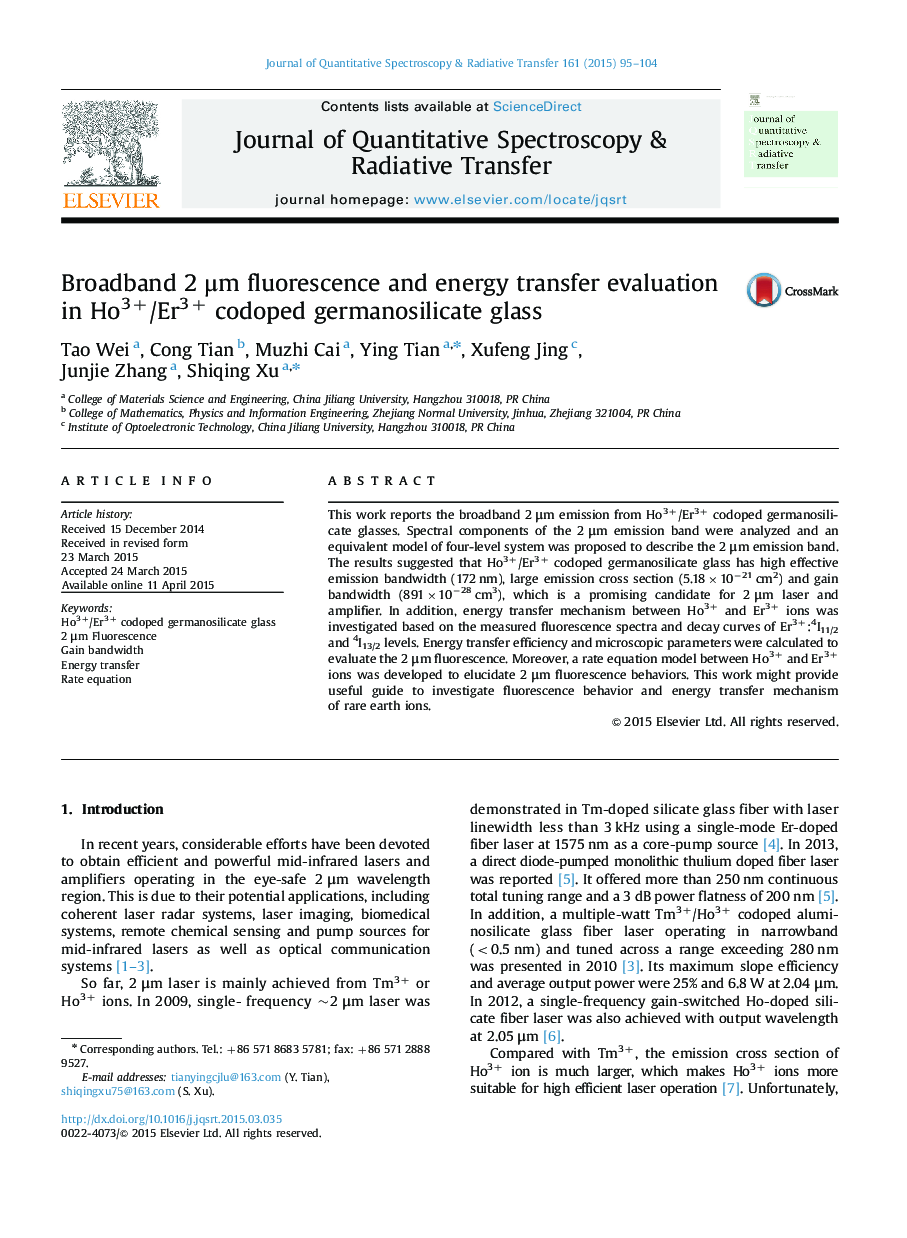| Article ID | Journal | Published Year | Pages | File Type |
|---|---|---|---|---|
| 5427886 | Journal of Quantitative Spectroscopy and Radiative Transfer | 2015 | 10 Pages |
â¢Ho3+/Er3+ codoped germanosilicate glasses were prepared.â¢Spectral components of the 2 μm emission band were analyzed.â¢Emission bandwidth, emission cross section and gain bandwidth were calculated.â¢Energy transfer mechanism between Ho3+ and Er3+ ions was investigated.â¢A rate equation was developed to elucidate 2 μm fluorescence behaviors.
This work reports the broadband 2 μm emission from Ho3+/Er3+ codoped germanosilicate glasses. Spectral components of the 2 μm emission band were analyzed and an equivalent model of four-level system was proposed to describe the 2 μm emission band. The results suggested that Ho3+/Er3+ codoped germanosilicate glass has high effective emission bandwidth (172 nm), large emission cross section (5.18Ã10â21 cm2) and gain bandwidth (891Ã10â28 cm3), which is a promising candidate for 2 μm laser and amplifier. In addition, energy transfer mechanism between Ho3+ and Er3+ ions was investigated based on the measured fluorescence spectra and decay curves of Er3+:4I11/2 and 4I13/2 levels. Energy transfer efficiency and microscopic parameters were calculated to evaluate the 2 μm fluorescence. Moreover, a rate equation model between Ho3+ and Er3+ ions was developed to elucidate 2 μm fluorescence behaviors. This work might provide useful guide to investigate fluorescence behavior and energy transfer mechanism of rare earth ions.
